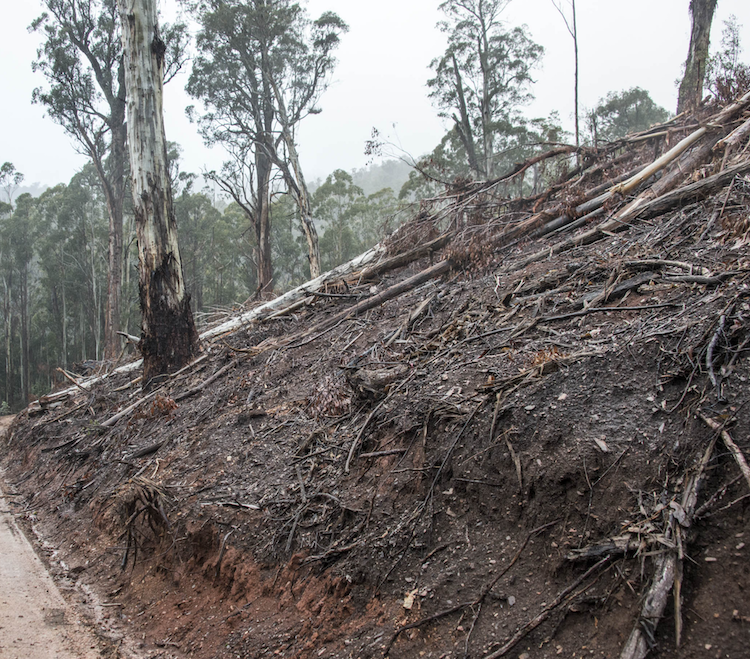
Recent logging in Swifts Creek, Victoria. (Image: Goongerah Environment Centre)
The Reserve Bank has called on Australian financial institutions to improve their climate related disclosures and climate risk assessments, as the threat of divestment from Australia because of climate risks grows.
Reserve Bank deputy governor Guy Debelle said: “Most Australian financial institutions now recognise climate as a risk. The assessment of climate risks has evolved considerably over the past five years but there remains considerable scope for improvement.”
Speaking at the CFA Australia Investment Conference yesterday, Debelle said climate change was a “first-order risk” for the financial system, with wide-ranging impact both in terms of geography and in terms of businesses and households.
He said disclosures needed to be comparable and consistent across companies, both within Australia and globally, if they are to be useful as an input into risk assessment.
ASIC is encouraging companies to use the Task Force on Climate-Related Financial Disclosures as the primary reference for disclosures. Eighty of the ASX 200 companies make climate disclosures under TCFD.
APRA is using scenarios set out by the Network for Greening the Financial System as the basis for assessing the potential financial exposure to climate risk of the five largest Australian banks in its Climate Vulnerability Assessment project. The NGFS is made up of more than 100 central banks and prudential regulators, including the RBA and APRA.
This week, the TCFD released its 2021 status report, which details a significant increase in the number of regulators and governments endorsing the TCFD over the past year as well as a big increase in the number of companies using the framework for climate disclosures. It now has 2600 corporate reporting entities globally – 1069 of them financial institutions.
However, the TCFD also noted a significant problem of under-reporting. Only 25 per cent of reporting entities provided information about their board oversight of climate-related risks and opportunities, and only 18 per cent provided information on management’s role.
Only 52 per cent reported on risks and opportunities for their companies and 39 per cent reported on the impact for their organisations.
Mary Schapiro, the head of the TCFD Secretariat, said these shortcomings had created an expectations gap, with investors and other users of the data looking for better disclosure. This needed to be addressed, she said.
As to the divestment risk, Debelle said that in its liaison conversations with Australian companies, the RBA was hearing climate come up constantly in discussions with equity investors and bond holders.
“This is a marked change from a few years ago,” he said.
“This has been an area of focus at the Council of Financial Regulators because of the potential implications for the cost of an ease of access to capital for Australian corporates.
“To date, we have only isolated examples of divestment from Australia because of climate risk, but the likelihood of more significant divestment is increasing. One example is the Riksbank’s decision to stop investing in Queensland and Western Australian state government paper,” Debelle said, referring to a late 2019 decision of Sweden's central bank.